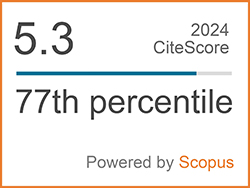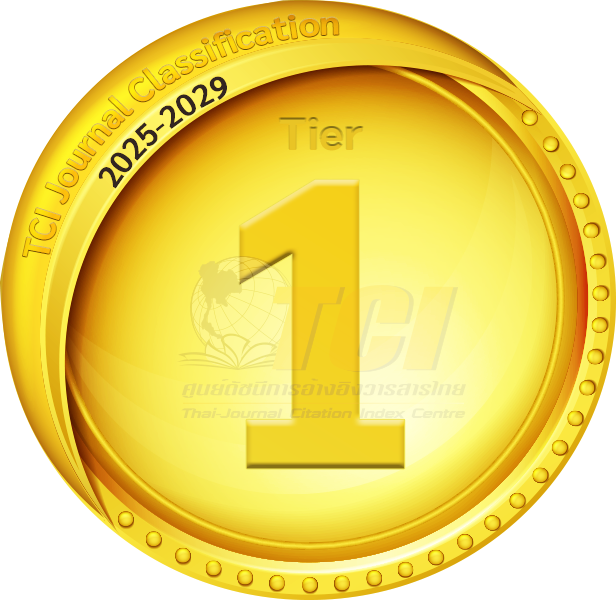From Decay to Design: 90 Years of Wood–Fungi Bioengineering Eco-Innovation
Abstract
Keywords
[1] T. K. Kirk, T. W. Jeffries, and G. F. Leatham, “Biotechnology: Applications and implications for the pulp and paper industry,” Tappi Journal, vol. 66, pp. 45–51, 1983.
[2] C. Mai, U. Kües, and H. Militz, “Biotechnology in the wood industry,” Applied Microbiology and Biotechnology, vol. 63, pp. 477–494, 2004.
[3] H. X. Cao, D. Michels, G. T. H. Vu, and O. Gailing, “Applications of CRISPR technologies in forestry and molecular wood biotechnology,” International Journal of Molecular Sciences, vol. 25, Art. no. 11792, 2024. doi: 10.3390/ ijms252111792.
[4] IEA Bioenergy. “The science-policy interface on the environmental sustainability of forest bioenergy: A strategic discussion paper.” ieabioenergy.com Accessed: Sep. 1, 2025. [Online]. Available: https://www.ieabioenergy.com/wp-content/uploads/2013/10/The-Science-Policy-Interface-on-the-Environmental-Sustainability-of-Forest-Bioenergy-a-Strategic-Discussion-Paper.pdf
[5] V. Hemmilä, S. Adamopoulos, O. Karlsson, and A. Kumar, “Development of sustainable bio-adhesives for engineered wood panels – A review,” RSC Advances, vol. 7, pp. 38604–38630, 2017, doi: 10.1039/c7ra06598a.
[6] T. Teng et al., “Conventional technology and nanotechnology in wood preservation: A review,” BioResources, vol. 13, 2018, doi: 10.15376/ biores.13.4.teng.
[7] M. Schubert, G. Panzarasa, and I. Burgert, “Sustainability in wood products: A new perspective for handling natural diversity,” Chemical Reviews, vol. 123, pp. 1889–1924, 2022, doi: 10.1021/acs.chemrev.2c00360.
[8] M. Siahkamari, S. Emmanuel, D. B. Hodge, and M. Nejad, “Lignin-glyoxal: A fully biobased formaldehyde-free wood adhesive for interior engineered wood products,” ACS Sustainable Chemistry & Engineering, vol. 10, pp. 3430–3441, 2022, doi: 10.1021/acssuschemeng.1c06843.
[9] UNEP. “Deforestation 2021.” wedocs.unep.org. Accessed: Sep. 1, 2025. [Online]. Available: https://wedocs.unep.org/bitstream/handle/20.500.11822/35851/DF.pdf
[10] H. Ritchie, “The world has lost one-third of its forest, but an end of deforestation is possible,” ourworldindata.org. Accessed: Sep. 1, 2025. [Online]. Available: https://ourworldindata.org/ world-lost-one-third-forests
[11] D. B. Ghida, “Geopolymeric cross-linking compressed lateritic soil-based bricks: An innovative eco-friendly building material with 60 MPa of compressive strength,” in Springer Proceedings in Materials, vol. 32, Singapore: Springer, 2023, doi: 10.1007/978-981-99-5567-1_33.
[12] D. B. Ghida, “Next-generation rammed earth architecture: A systematic review of geopolymer stabilization techniques,” in Springer Proceedings in Materials, vol. 60, Singapore: Springer, 2024, doi: 10.1007/978-981-97-7071-7_16.
[13] P. Gaikwad and S. Sathe, “Effect of fly ash on compressive strength, carbonation and corrosion resistance of reinforced concrete: A systematic review,” World Journal of Engineering, vol. 22, pp. 40–60, 2025. doi: 10.1108/WJE-07-2023-0240.
[14] D. B. Ghida, “Organic stabilization in earthen plaster: Eco-compatible architecture and ancient techniques in Tata Somba homes,” Frontiers of Architectural Research, vol. 13, pp. 625–638, 2024. doi: 10.1016/j.foar.2024.02.004.
[15] D. Luo, J. Yang, and N. Peek, “3D-printed mycelium biocomposites: Method for 3D printing and growing fungi-based composites,” 3D Printing and Additive Manufacturing, vol. 2, no. 2, 2025, doi: 10.1089/3dp.2023.0342.
[16] M. A. Shakir, M. I. Ahmad, Y. Yusup, and M. Rafatullah, “From waste to wealth: Converting rubber wood sawdust into green mycelium-based composite,” Biomass Conversion and Biorefinery, vol. 15, pp. 739–757, 2025. doi: 10.1007/s13399-023-05113-9.
[17] N. M. Majib, N. D. Yaacob, S. S. Ting, N. M. Rohaizad, and A. M. Azizul Rashidi, “Fungal mycelium-based biofoam composite: A review in growth, properties and application,” Progress in Rubber, Plastics and Recycling Technology, vol. 41, pp. 91–123, 2024. doi: 10.1177/14777 606241252702.
[18] E. Bari, M. G. Far, G. Daniel, Y. Bozorgzadeh, J. Ribera, H. Aghajani, and R. Hosseinpourpia, “Fungal behavior and recent developments in biopulping technology,” World Journal of Microbiology and Biotechnology, vol. 40, 2024, Art. no. 207, doi: 10.1007/s11274-024-03992-2.
[19] L. Liu et al., “The origins of specialized pottery and diverse alcohol fermentation techniques in early Neolithic China,” Proceedings of the National Academy of Sciences of the United States of America, vol. 116, pp. 12767–12774, 2019, doi: 10.1073/pnas.1902668116.
[20] A. De Obeso Fernandez Del Valle and C. Q. Scheckhuber, “From past to present: Biotechnology in Mexico using algae and fungi,” Plants, vol. 10, Art. no. 2530, 2021. doi: 10.3390/plants 10112530.
[21] Y. He, “Long-Term Human-Plant Relationship: Food Practices, Environmental Dynamics, and Societal Processes in the Northern Zone, China During the Neolithic Period,” Ph.D. dissertation, Stanford University, Stanford, CA, 2024.
[22] L. Chowdhury, J. Jogi, and M. P. A. Dey, Introduction to Microbiology. Bhopal, India: Addition Publishing House, 2024.
[23] G. C. Ainsworth, Introduction to the History of Mycology. Cambridge, UK: Cambridge University Press, 1976.
[24] G. Sumbali and B. M. Johri, The Fungi. Oxford, UK: Alpha Science International, 2005.
[25] E. Elsacker, E. Peeters, and L. De Laet, “Mycelium-based materials at the dawn of the Anthropocene,” in Structures and Architecture – Bridging the Gap and Crossing Borders, CRC Press, 2019, pp. 1083–1090, doi: 10.1201/9781 315229126-129.
[26] H. Emuth. “DEFA, Mykoholz – Ein Neuer Werkstoff der DDR.” youtube.com. Accessed: Sep. 1, 2025. [Online]. Available: https://www. youtube.com/watch?v=afUf_6n1BAc&t=721s
[27] S. Stange and A. Wagenführ, “70 years of wood modification with fungi,” Fungal Biology and Biotechnology, vol. 9, Art. no. 7, 2022, doi: 10.1186/s40694-022-00136-9.
[28] O. Schmidt, Wood and Tree Fungi. Berlin, Germany: Springer-Verlag, 2006.
[29] V. Krackler, D. Keunecke, and P. Niemz, “Verarbeitung und Verwendungsmöglichkeiten von Laubholz und Laubholzresten,” ETH Zurich, Switzerland, 2010.
[30] G. Müller. “Die Luthardtsche Technische Mykologie.” tham-thueringen.de. Accessed: Sep. 1, 2025. [Online]. Available: https://www.tham-thueringen.de/ wp-content/uploads/7_Luthardt_und-das-Mykoholz.pdf
[31] T. Balaeș, B. M. Radu, and C. Tănase, “Mycelium-composite materials – A promising alternative to plastics?” Journal of Fungi, vol. 9, Art. no. 210, 2023, doi: 10.3390/jof9020210.
[32] N. Z. Plaza, S. V. Pingali, and R. E. Ibach, “Nanostructural changes correlated to decay resistance of chemically modified wood fibers,” Fibers, vol. 10, Art. no. 40, 2022, doi: 10.3390/ fib10050040.
[33] M. Filippi, M. Mekkattu, and R. K. Katzschmann, “Sustainable biofabrication: From bioprinting to AI-driven predictive methods,” Trends in Biotechnology, vol. 43, pp. 290–303, 2025. doi: 10.1016/j.tibtech.2024.07.002.
[34] E. Camilleri, S. Narayan, D. Lingam, and R. Blundell, “Mycelium-based composites: An updated comprehensive overview,” Biotechnology Advances, vol. 79, Art. no. 108517, 2025. doi: 10.1016/ j.biotechadv.2025.108517.
[35] R. Hartig, Wichtige Krankheiten der Waldbäume: Beiträge zur Mycologie und Phytopathologie für Botaniker und Forstmänner. Berlin, Germany: Springer, 1874.
[36] J. Guarro, J. Gené, and A. M. Stchigel, “Developments in fungal taxonomy,” Clinical Microbiology Reviews, vol. 12, pp. 454–500, 1999, doi: 10.1128/CMR.12.3.454.
[37] D. Moore, V. Ahmadjian, and C. J. Alexopoulos. “Fungus.” britannica.com. Accessed: Sep. 1, 2025. [Online]. Available: https://www.britannica.com/science/fungus
[38] A. Sportes et al., “A historical perspective on mycorrhizal mutualism emphasizing arbuscular mycorrhizas and their emerging challenges,” Mycorrhiza, vol. 31, pp. 637–653, 2021. doi: 10.1007/s00572-021-01053-2.
[39] Blankevoort/Naturalis. “Schimmels: Tussen Planten en Dieren In.” natuurwijzer.naturalis.nl. Accessed: Sep. 1, 2025. [Online]. Available: https://natuurwijzer.naturalis.nl/leerobjecten/schimmels-tussen-planten-en-dieren-in
[40] Kimikel. “Trametes versicolor growing on a rotting log.” wikipedia.org. Accessed: Sep. 1, 2025. [Online]. Available: https://en.wikipedia.org/wiki/Polypore#/media/File:Trametes_versicolor_Bear_Creek.jpg
[41] A. S. Hirao et al., “Japanese ‘Nameko’ mushrooms (Pholiota microspora) produced via sawdust-based cultivation exhibit severe genetic bottleneck associated with a single founder,” Mycoscience, vol. 63, pp. 79–87, 2022, doi: 10.47371/mycosci.2022.03.002.
[42] K. B. Boadu et al., “Influence of the chemical content of sawdust on the levels of important macronutrients and ash composition in pearl oyster mushroom (Pleurotus ostreatus),” PLoS ONE, vol. 18, 2023, Art. no. e0287532, doi: 10.1371/journal.pone.0287532.
[43] O. Tackmann, O. Schmidt, and W. Liese, “Geschichte der Mykologie und Holzpathologie,” Zeitschrift für Mykologie, vol. 75, p. 13, 2009.
[44] R. A. Blanchette, D. T. Haynes, B. W. Held, J. Niemann, and N. Wales, “Fungal mycelial mats used as textiles by Indigenous people of North America,” Mycologia, vol. 113, pp. 261–267, 2021, doi: 10.1080/00275514.2020.1858686.
[45] W. Luthardt, “Mykoholz: Its production, properties, and uses,” in Holzzerstörung durch Pilze: Internationales Symposium Eberswalde 1962, Berlin, Germany: Akademie-Verlag, 1963, pp. 83–88.
[46] W. Luthardt. “Verfahren zur Herstellung und Handhabung von Impfmaterial in der Pilzkultur,” Germany Patent DE932998C, Feb. 22, 1953.
[47] R. Trautvetter, “‘Mykoholz’ – A material with new properties,” Holzindustrie, vol. 9, pp. 238–241, 1956.
[48] W. Luthardt, “From cultivation of edible fungi on wood to ‘biological stump disposal’ and manufacture of ‘Myko-Holz,’” Forst- und Jagdzeitung, vol. 6, pp. 429–437, 1956.
[49] G. Gramss, “Rationalization in ‘Mykoholz’ production by breaking the vitality factor in freshly felled stemwood of European beech prior to inoculation with wood-decay fungi,” Material und Organismen, vol. 24, pp. 104–119, 1989.
[50] E. Jahn, G. Patscheke, and G. Kerner, “Changes in wood composition in the production of ‘Mykoholz,’” in Holzzerstörung durch Pilze: Internationales Symposium Eberswalde 1962, Berlin, Germany: Akademie-Verlag, 1963, pp. 89–96.
[51] H. Unbehaun, B. Dittler, G. Kühne, and A. Wagenführ, “Investigation into the biotechnological modification of wood and its application in the wood-based material industry,” Acta Biotechnologica, vol. 20, pp. 305–312, 2000. doi: 10.1002/abio. 370200311.
[52] G. Patscheke and G. Kerner, “Chemical softening of beech wood, especially for use as pencil wood,” Holztechnologie, vol. 7, pp. 93–96, 1966.
[53] G. Gramss, “Kuehneromyces mutabilis,” in The Biology and Cultivation of Edible Mushrooms, S. T. Chang and W. A. Hayes, Eds. New York: Academic Press, 1978, pp. 423–443. doi: 10.1016/b978-0-12-168050-3.50026-8.
[54] C. Stührk, “Tomographische Visualisierung des Hyphensystems des Bioincising Pilzes Physisporinus vitreus in Fichtenholz (Picea abies),” Ph.D. dissertation, ETH Zurich, Zurich, Switzerland, 2012.
[55] F. W. M. R. Schwarze, M. Spycher, and S. Fink, “Superior wood for violins – Wood decay fungi as a substitute for cold climate,” New Phytologist, vol. 179, pp. 1095–1104, 2008. doi: 10.1111/j.1469-8137.2008.02524.x.
[56] EMPA, “Empa-Geige Übertrifft Stradivari, Medienmitteilung,” EMPA, Dübendorf, Switzerland, 2009.
[57] Ecovative. “Meet the Luthier Growing Guitars with Mycelium.” 2022. shop.ecovative.com. Accessed: Sep. 1, 2025. [Online]. Available: https://shop.ecovative.com/blogs/blog/meet-the-woman-growing-guitars-with-mycelium
[58] T. P. Hughes, “The evolution of large technological systems,” in The Social Construction of Technological Systems: New Directions in the Sociology and History of Technology, W. E. Bijker, T. P. Hughes, and T. Pinch, Eds. Cambridge, MA, USA: MIT Press, 1987, pp. 51–82.
[59] Urschel. “Urschel Wall Building Machine.” youtube.com. Accessed: Sep. 1, 2025. [Online]. Available: https://www.youtube.com/watch?v= QXqwnJTVSsE&t=119s
[60] W. E. Urschel, “Machine for Building Walls,” U.S. Patent US2339892A, Oct. 20, 1941.
[61] E. Soh, J. H. Teoh, B. Leong, T. Xing, and H. Le Ferrand, “3D printing of mycelium engineered living materials using a waste-based ink and non-sterile conditions,” Materials & Design, vol. 236, 2023, Art. no. 112481, doi: 10.1016/ j.matdes.2023.112481.
[62] E. Özdemir, A. Rossi, and P. Eversmann, “MycoCurva: Stay-in-place fabric formworks for curved veneer-reinforced mycelium building components,” Architecture, Structures and Construction, vol. 5, 2025, Art. no. 16.
[63] H.-J. Shin, H.-S. Ro, M. Kawauchi, and Y. Honda, “Review on mushroom mycelium-based products and their production process: From upstream to downstream,” Bioresources and Bioprocessing, vol. 12, 2025, Art. no. 3, doi: 10.1186/s40643-024-00836-7.
[64] L. Rothschild. “Mycotecture Off Planet.” nasa.gov. Accessed: Sep. 1, 2025. [Online]. Available: https://www.nasa.gov/general/mycotecture- off-planet/
[65] D. Ben Ghida, “Nanomaterials’ application in architectural façades in Italy,” Applied Science and Engineering Progress, vol. 16, no. 3, 2022, Art. no. 6277, doi: 10.14416/j.asep.2022.10.001.
[66] D. B. Ghida and S. B. Ghida, “Investment in agrophotovoltaics: Efficient solutions from Switzerland,” International Journal of Innovative Technology and Exploring Engineering, vol. 8, p. 12, 2019.
[67] D. B. Ghida, “Prospects and challenges in the Korean construction industry: An economic overview,” International Journal of Civil Engineering and Technology, vol. 8, pp. 1338–1346, 2017.
[68] M. Schellini, S. BenGhida, D. Ben-Ghida, and F. Romanelli-Assumpção, “Academic Philistinism? The challenges of contemporary artistic research inside academia. Semi-structured interviews with visual art students in Brazil,” Arte, Individuo y Sociedad, vol. 35, p. 181, 2023.
[69] D. B. Ghida, “Indoor radon mitigation in South Korea,” International Journal of Applied Engineering Research, vol. 11, pp. 8521–8523, 2016.
[70] D. BenGhida, “INSA balconies: A parasitic architecture,” AIP Conference Proceedings, vol. 2799, no. 1, 2024, Art. no. 020101, doi: 10.1063/5.0181850.
[71] W. Aiduang et al., “Amazing fungi for eco-friendly composite materials: A comprehensive review,” Journal of Fungi, vol. 8, no. 8, 2022, Art. no. 842, doi: 10.3390/jof8080842.
[72] R. Volk et al., “Life cycle assessment of mycelium-based composite materials,” Resources, Conservation and Recycling, vol. 205, 2024, Art. no. 107579, doi: 10.1016/j.resconrec.2024. 107579.
[73] Franklin Associates. “Cradle-to-Gate Life Cycle Analysis of Polyether Polyol for Rigid Foam Polyurethanes.” americanchemistry.com. Accessed: Sep. 1, 2025. [Online]. Available: https://www. americanchemistry.com/better-policy-regulation/plastics/resources/cradle-to-gate-life-cycle-analysis-of-polyether-polyol-for-rigid-foam-polyurethanes
[74] E. Y. Osman, “Economic assessment of mycelia-based composite in the built environment,” M.S. thesis, Kansas State University, Manhattan, KS, USA, 2023.
[75] E. Soh and H. L. Ferrand, “Woodpile structural designs to increase the stiffness of mycelium-bound composites,” Materials & Design, vol. 225, 2022, Art. no. 111530, doi: 10.1016/ j.matdes.2022.111530.
[76] L. Yang and Z. Qin, “Mycelium-based wood composites for light weight and high strength by experiment and machine learning,” Cell Reports Physical Science, vol. 4, no. 6, 2023, Art. no. 101424, doi: 10.1016/j.xcrp.2023.101424.
[77] MNEXT, “FungAI: Smart growth of sustainable materials.” mnext.nl. Accessed: Sep. 1, 2025. [Online]. Available: https://www.mnext.nl/en/ projects/fungai/
[78] E. Camilleri, S. Narayan, D. Lingam, and R. Blundell, “Mycelium-based composites: An updated comprehensive overview,” Biotechnology Advances, vol. 79, Art. no. 108517, 2025. doi: 10.1016/j.biotechadv.2025.108517.
[79] D. Luo, J. Yang, and N. Peek, “3D-Printed mycelium biocomposites: Method for 3D printing and growing fungi-based composites,” 3D Printing and Additive Manufacturing, vol. 12, pp. 98–111, 2025, doi: 10.1089/3dp.2023. 0342.
[80] N. Wattanavichean et al., “Mycelium-based breakthroughs: Exploring commercialization, research, and next-gen possibilities,” Circular Economy and Sustainability, vol. 5, pp. 3211–3253, 2025, doi: 10.1007/s43615-025-00539-x.
[81] D. BenGhida, S. BenGhida, and S. BenGhida, “Rethinking higher education post-COVID-19: Innovative design studio teaching to architecture students,” AIP Conference Proceedings, vol. 2799, no. 1, Art. no. 020107, 2024. doi: 10.1063/ 5.0182404.
[82] D. BenGhida and S. BenGhida, “La créativité dans la réhabilitation urbaine: Le Viaduc des Arts à Paris,” Association Culturelle Franco-Coréenne, vol. 35, no. 2, pp. 215–243, Nov. 2017, doi: 10.18022/acfco.2017.35.1.008.
[83] CIA. “Development of Myco-Wood in East Germany.” cia.gov. Accessed: Sep. 1, 2025. [Online]. Available: https://www.cia.gov/readingroom/ document/cia-rdp80-00810a006100380003-3
[84] C. Madusanka et al., “A review of recent advances in fungal mycelium based composites,” Discover Materials, vol. 4, 2024, Art. no. 13, doi: 10.1007/s43939-024-00084-8.DOI: 10.14416/j.asep.2025.11.003
Refbacks
- There are currently no refbacks.
 Applied Science and Engineering Progress
Applied Science and Engineering Progress







